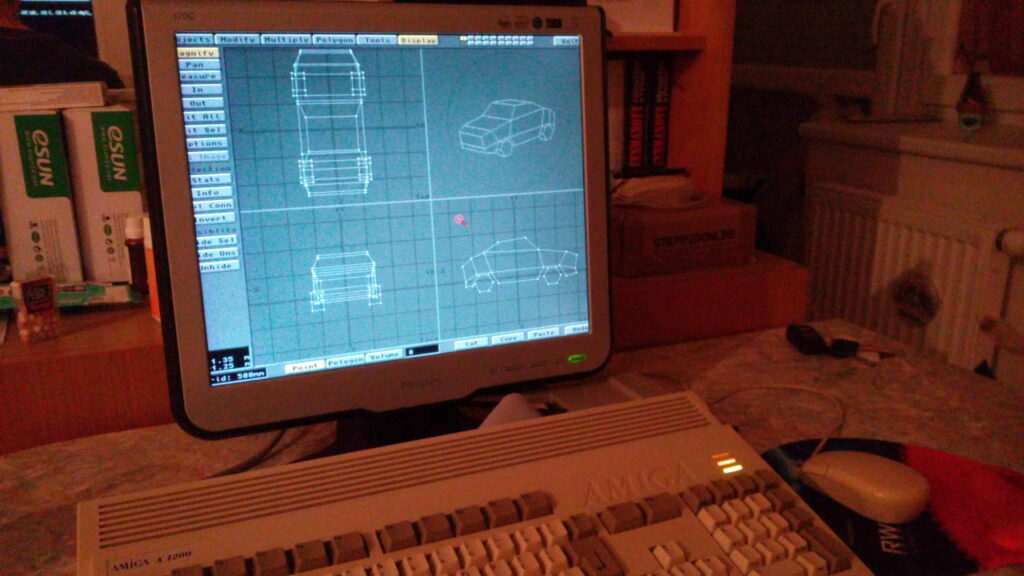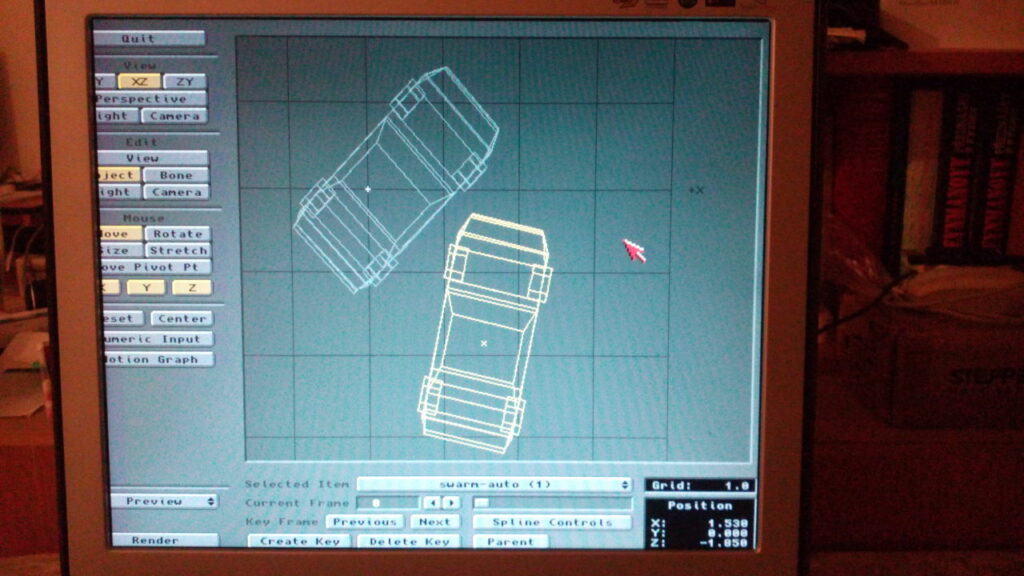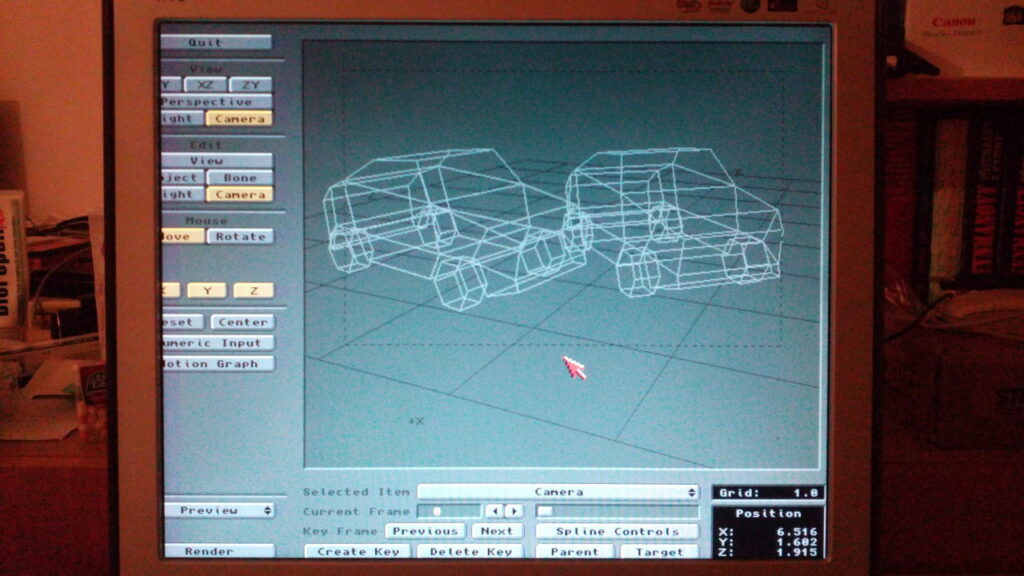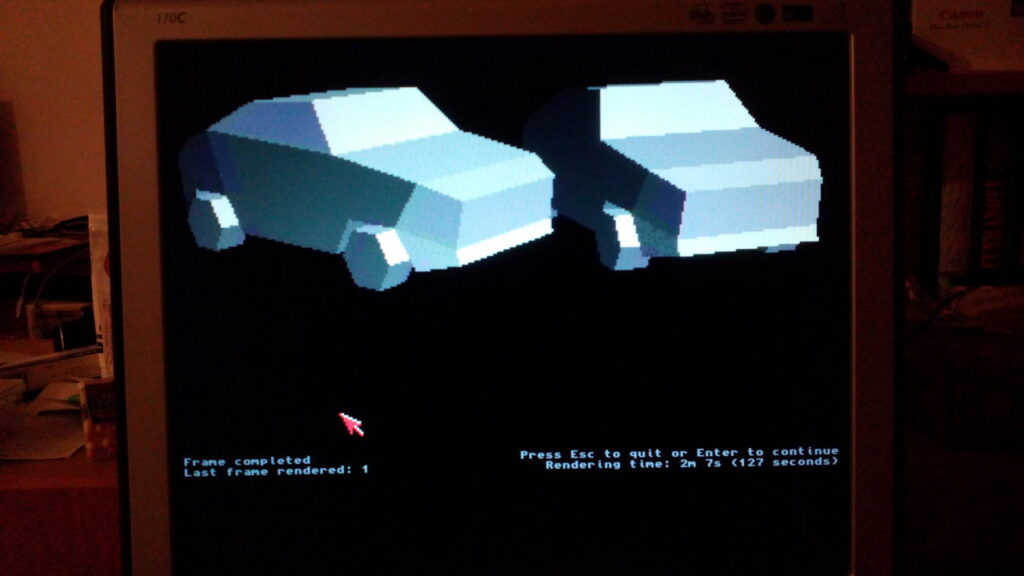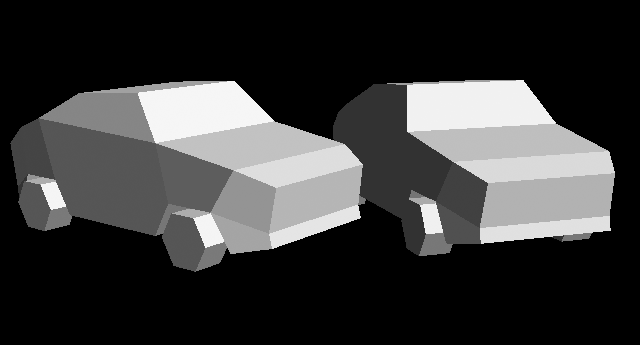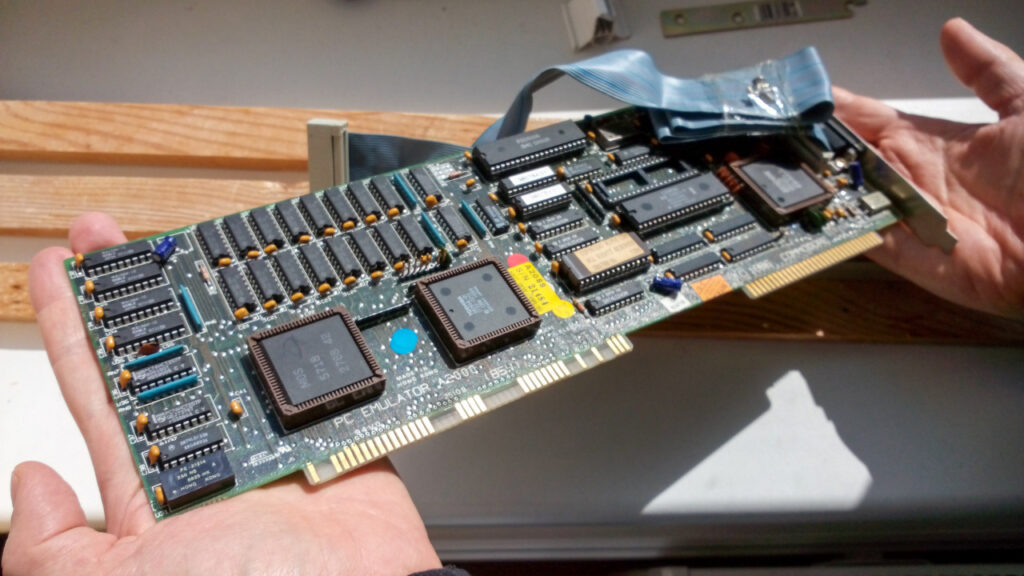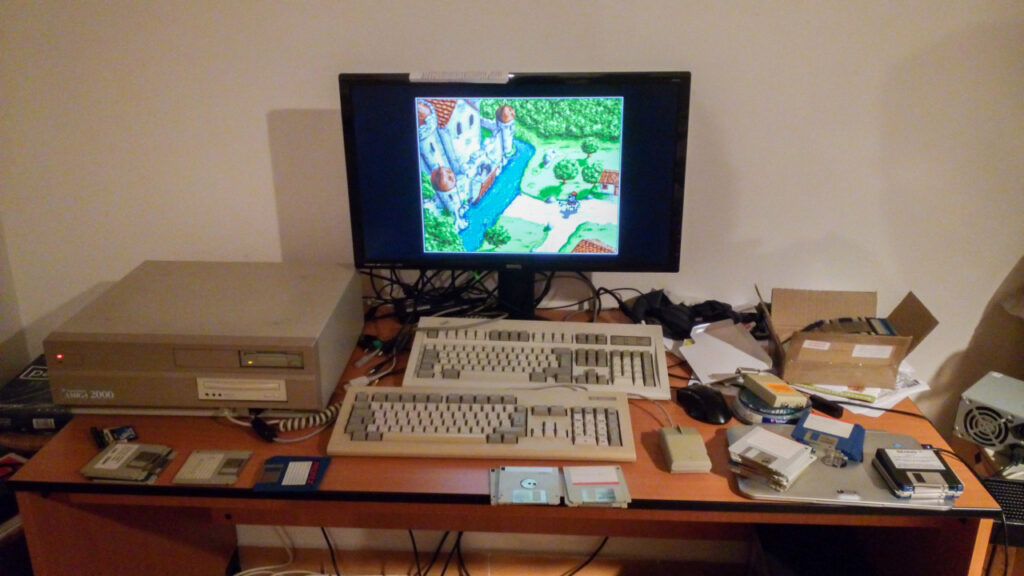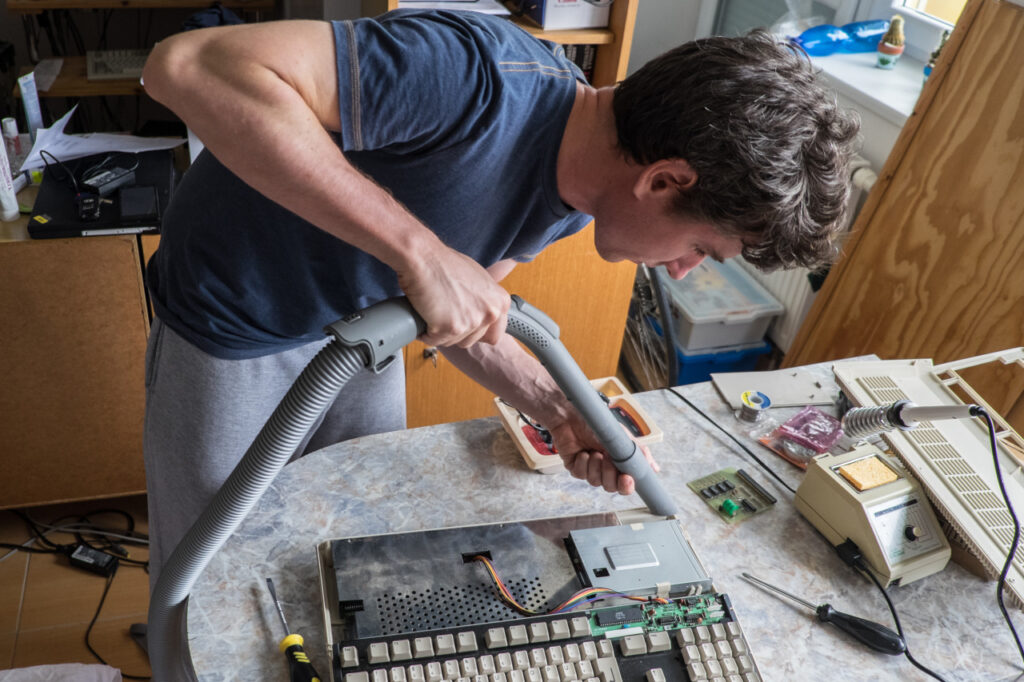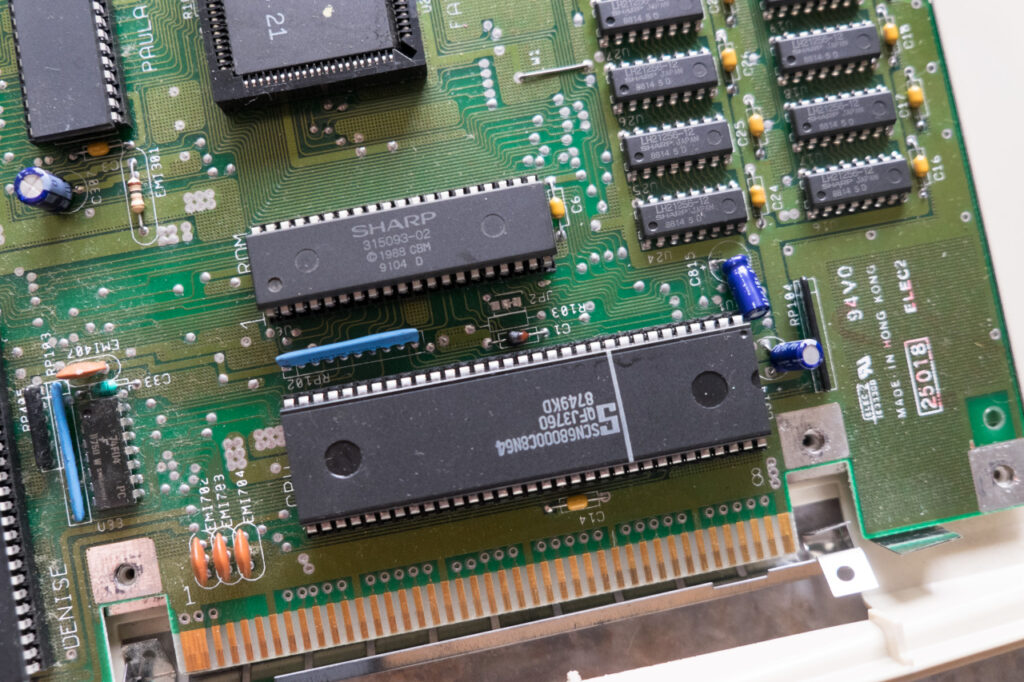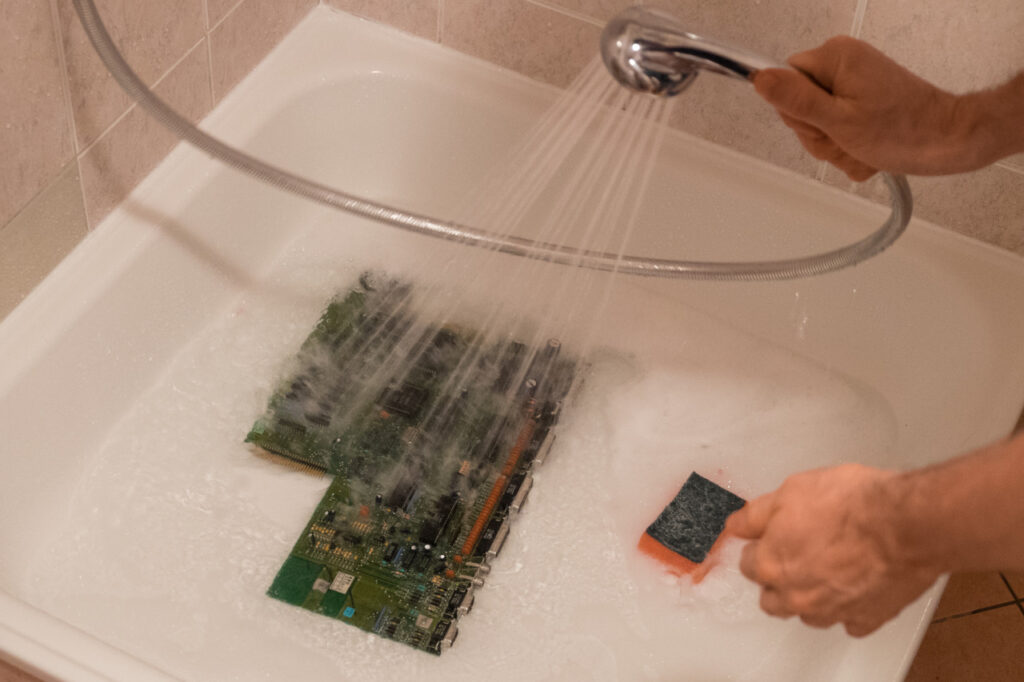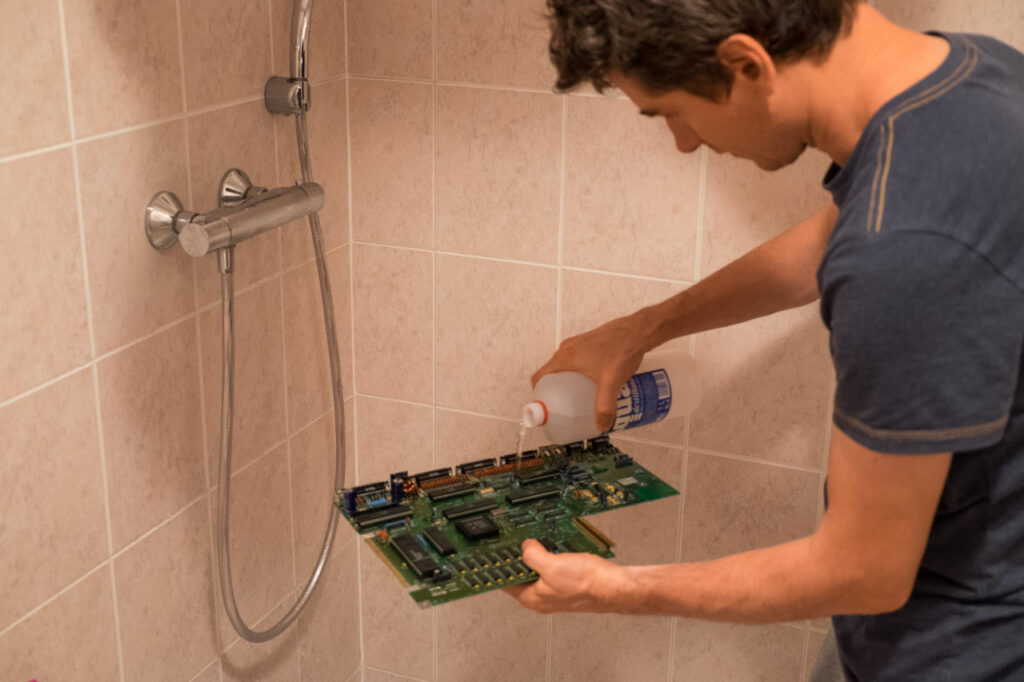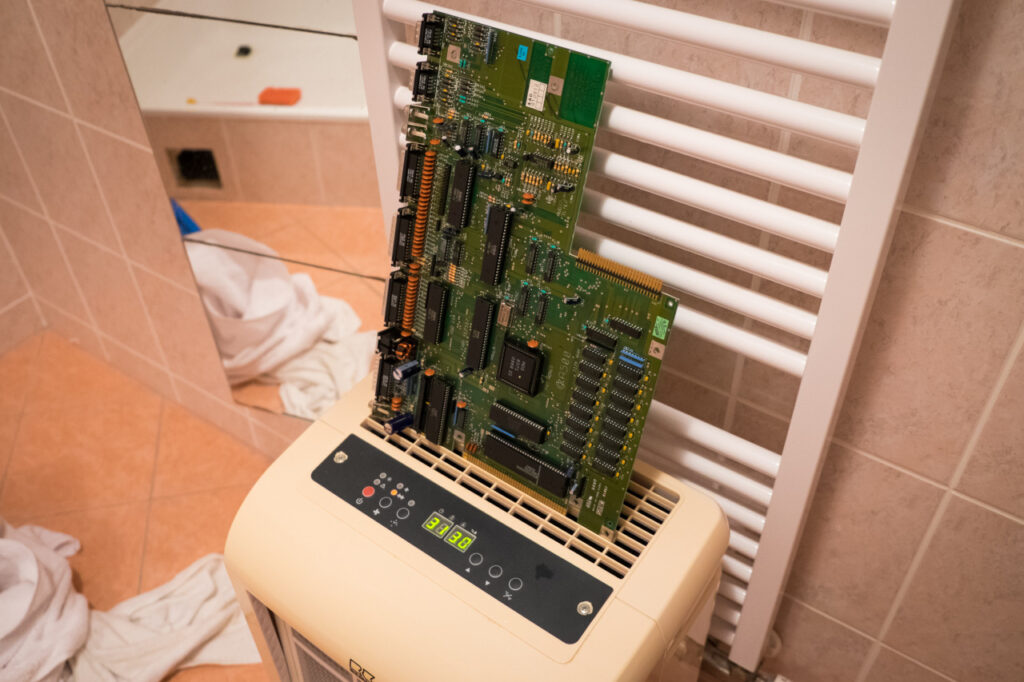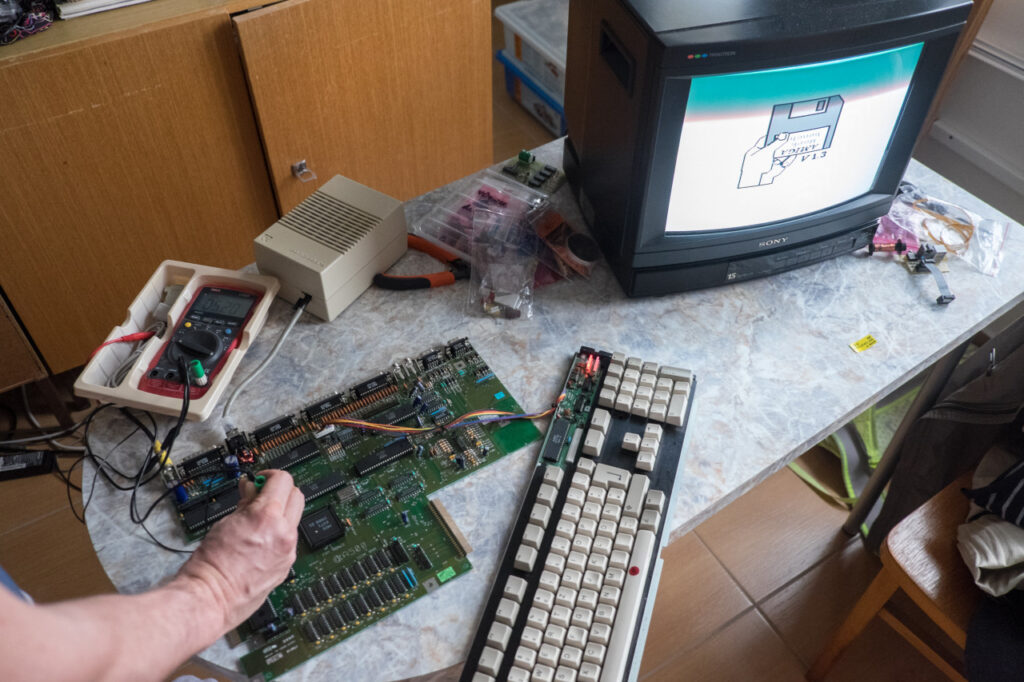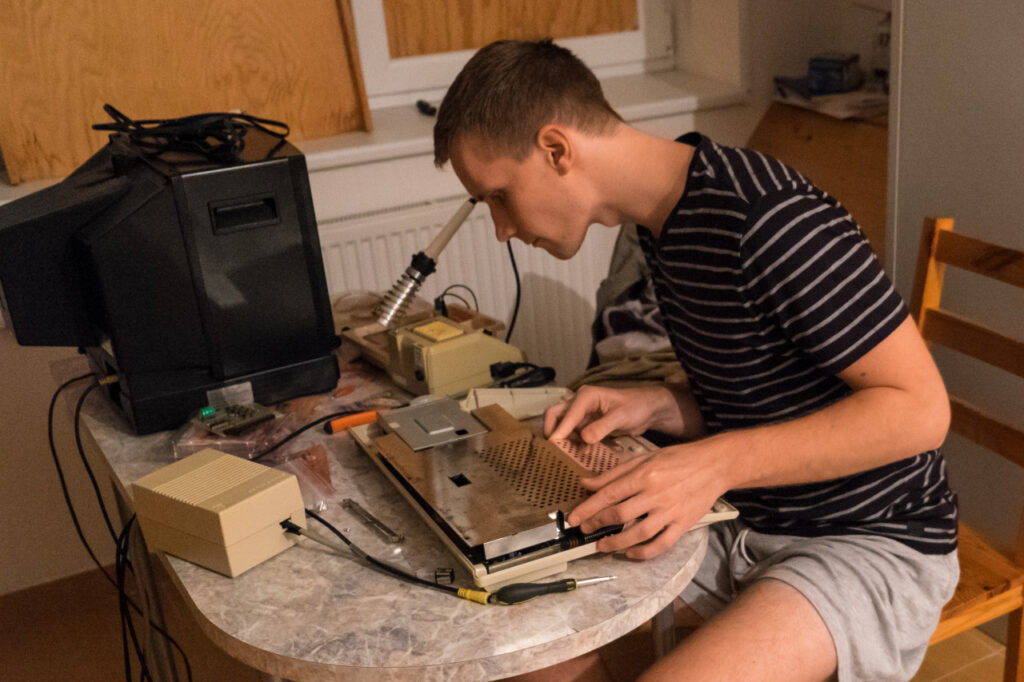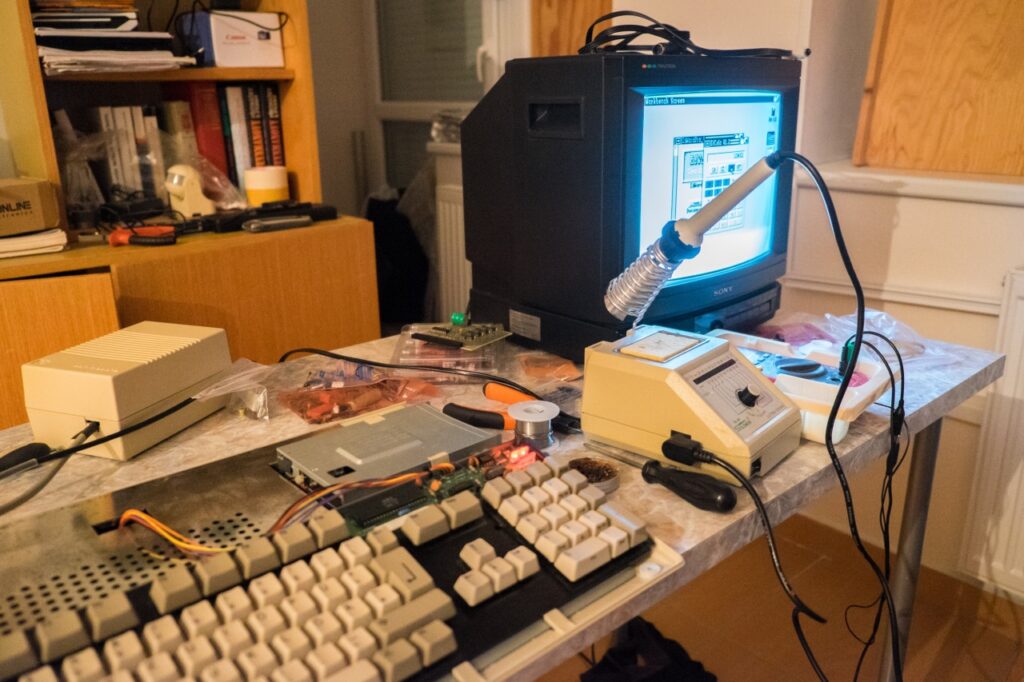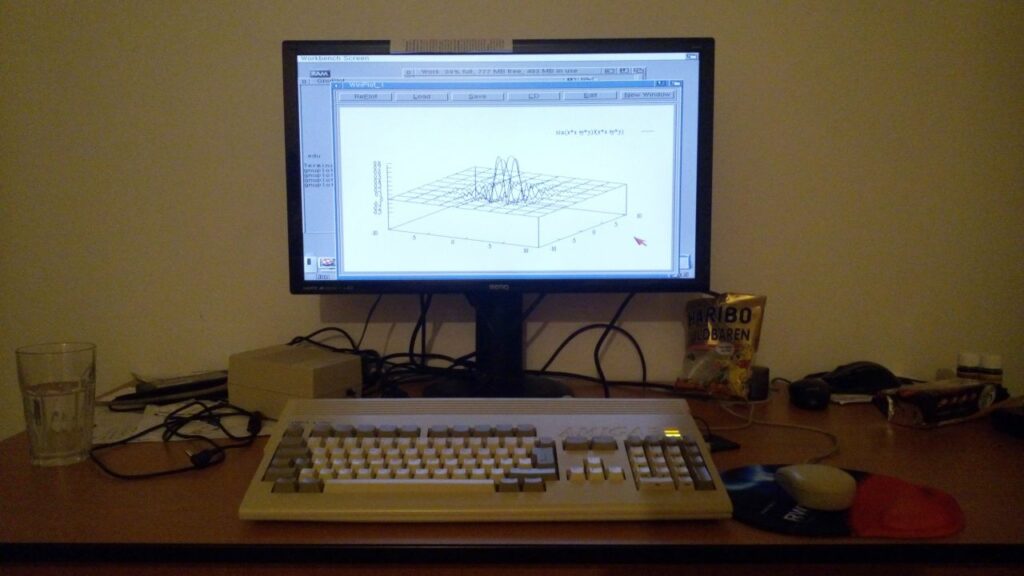LightWave 3D 3.5 (1994)
LightWave is my favorite 3D modeling software. I remember when I had it running on a 21-inch Silicon Graphics CRT screen connected to a PC with Matrox graphics card. I was quite interested how fast and usable LightWave was on Amiga computers in mid-90s.
My A1200 is upgraded with 50-MHz Motorola 68030 and it is much faster than original 14-MHz 68020. LightWave 3.5 is very advanced software and even this old version has almost all features that are necessary for easy 3D modeling. That’s why I’m really surprised how fluently it can run on my Amiga computer. If a scene has under 1000 polygons 68030 without mathematical co-processor has still enough computing power for low-poly graphics used in 90s 3D games.
Speed becomes an issue when you want to render a scene. A very simple car needs more than a minute to be rendered in 24-bit mode and 640×480 resolution (without any texture, advanced materials or reflections).
Result? 3D modeling is ok, but you have to be very patient even for static pictures. Animations would take weeks of rendering.
Now I’m curious how fast LightWave can be on a PC with a 486 processor, because 486-based PCs could be purchased for about the same price as A1200 with the 68030 upgrade back in 1994/1995.
